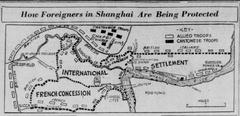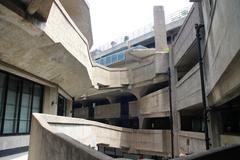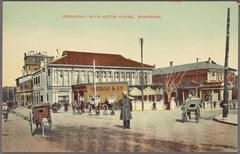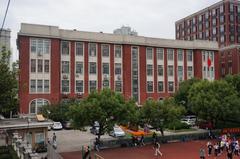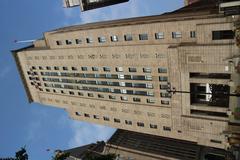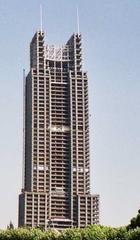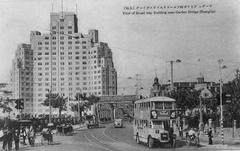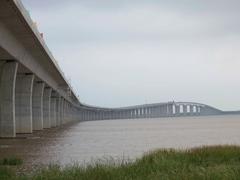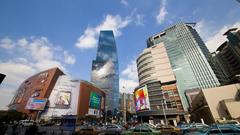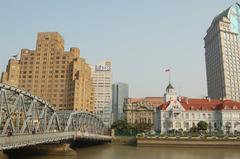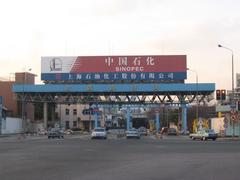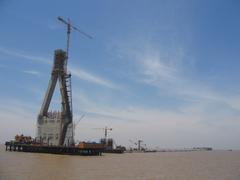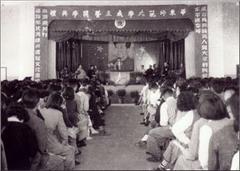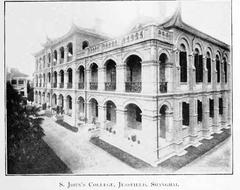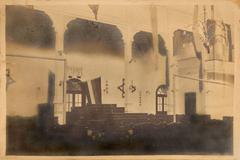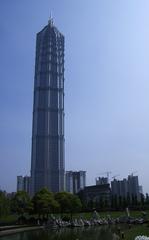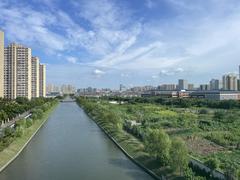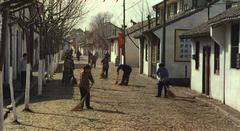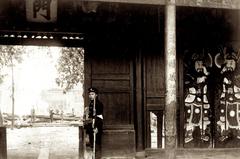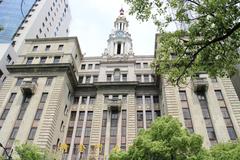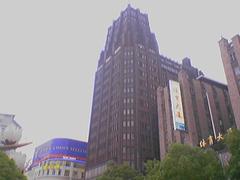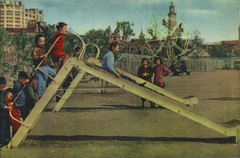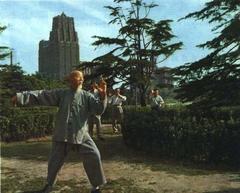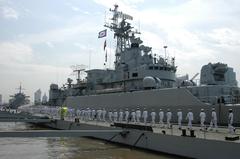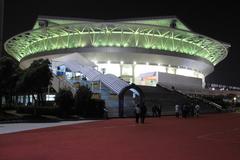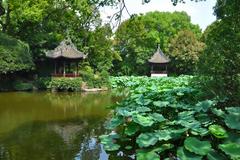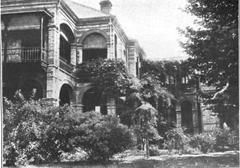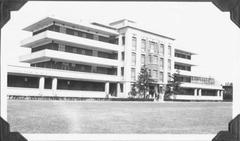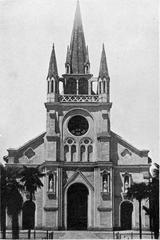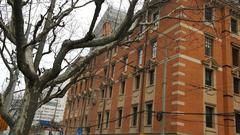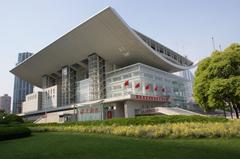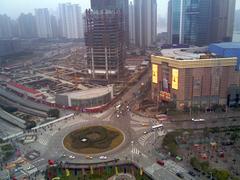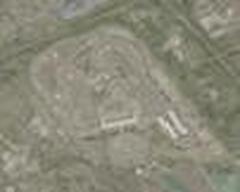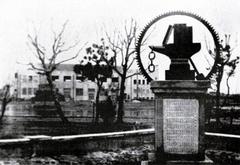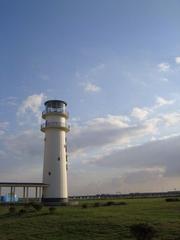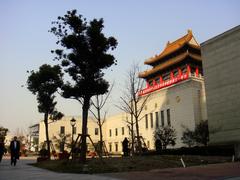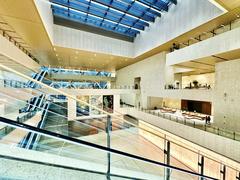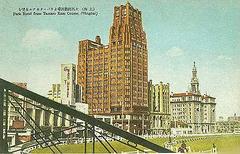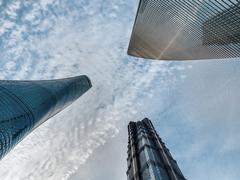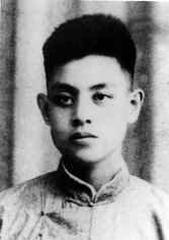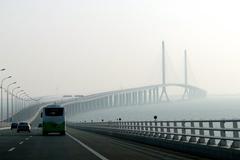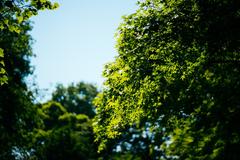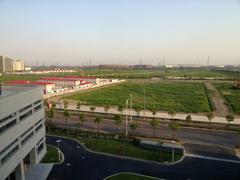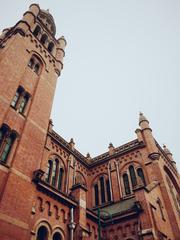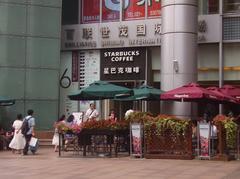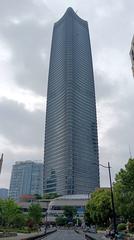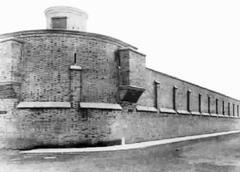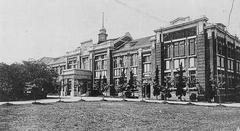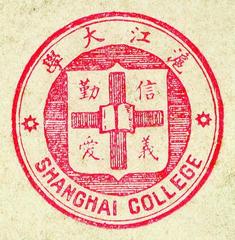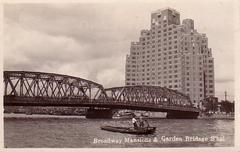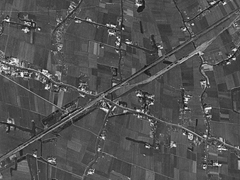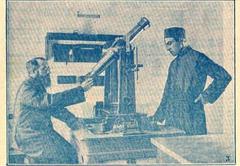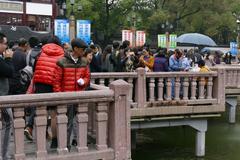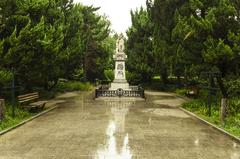
Comprehensive Guide to Visiting ICBC Yuyuan Road Sub-branch, Shanghai, People’s Republic of China
Date: 01/08/2024
Introduction
Shanghai, a city where the past and present coexist in a harmonious blend, offers a plethora of historical sites and modern attractions that cater to diverse interests. From its origins as a small agricultural village, Shanghai has evolved into one of China’s principal trading ports and a global financial hub. The city’s development surged during the late Qing dynasty and further accelerated in the 1920s and 1930s, earning its reputation as ‘The Paris of the East, the New York of the West’ (Wikipedia). Key historical sites such as The Bund, Yu Garden, and People’s Square provide windows into Shanghai’s rich cultural heritage and architectural grandeur (PlanetWare). Visitors can explore these sites, soaking in the unique atmosphere shaped by both Eastern and Western influences. Additionally, the Industrial and Commercial Bank of China’s (ICBC) Yuyuan Road branch stands as a testament to the city’s financial prowess and historical significance (Wikipedia). This guide aims to provide comprehensive insights into visiting these historical and cultural landmarks, offering practical tips, historical context, and recommendations for an enriching experience in Shanghai.
Table of Contents
- Exploring Shanghai’s Historical Sites: Visiting Hours, Tickets, and Cultural Significance
- Visiting the ICBC Yuyuan Road Branch in Shanghai: Hours, Tips, and Nearby Attractions
Exploring Shanghai’s Historical Sites: Visiting Hours, Tickets, and Cultural Significance
Historical Background
Early Development and Significance
Shanghai’s history spans over a thousand years, closely paralleling the development of modern China. Originally a small agricultural village, Shanghai developed during the late Qing dynasty (1644–1912) as one of China’s principal trading ports. The establishment of the Marine Office and Goods Control Bureau in 1074 by Emperor Shenzong of Song marked the beginning of Shanghai’s transformation into a significant commercial hub (Wikipedia).
The Rise of Shanghai as a Financial Center
During the 1920s and 1930s, Shanghai became known as “The Paris of the East, the New York of the West” (Wikipedia). This era saw the city becoming a commercial center of East Asia, attracting banks from all over the world. The city’s industrial and financial power increased significantly, with merchants controlling the city while the rest of China was divided among warlords. Shanghai was made a special city in 1927 and a municipality in May 1930 (Wikipedia).
Architectural and Cultural Flourishing
Artistically, Shanghai became the hub for three new art forms: Chinese cinema, Chinese animation, and Chinese popular music. The architectural style at the time was modeled after British and American designs. Many of the grandest buildings on The Bund, such as the Shanghai Club, the Asia Building, and the HSBC Building, were constructed or renovated during this period (Wikipedia). The city created a distinct image that separated it from all other Chinese cities that had come before it.
The Greater Shanghai Plan
In 1927, the Nationalist Government of the Republic of China drew up a plan to develop land in the northeast of the city adjacent to the Huangpu River. This area had also been earmarked by Sun Yat-sen, founder of the Chinese Republic, as the center of China’s development plans with a view to Shanghai becoming a global commercial center. By 1931, the new Shanghai Special City Government had approved and started work on the Greater Shanghai Plan, utilizing ideas drawn from British expert Ebenezer Howard’s 1902 book “Garden Cities of Tomorrow” (Wikipedia).
World War II and Japanese Occupation
The period from 1937 to 1945 marked the end of Old Shanghai, with World War II and the Japanese occupation significantly impacting the city. Despite these challenges, Shanghai continued to grow and evolve, eventually becoming one of Asia’s major financial centers and the world’s busiest container port following the economic reforms of the early 1990s (Wikipedia).
Modern Developments and Preservation Efforts
Amidst Shanghai’s rapid development, efforts have been made to preserve its historical and cultural heritage. The Yuyuan Gardens, for example, have remained a testament to the city’s transformation. Through dedicated preservation and restoration efforts, the gardens continue to celebrate their historical and cultural value (TravelTomTom).
Cultural and Social Dynamics
Shanghai’s People’s Park is notable for its unique social activities. On weekends, parents of unmarried adults gather to exchange details of their children in an attempt to find suitable matches. This matchmaking activity highlights the blend of traditional and modern cultural practices in the city (TravelGeekery).
Key Historical Sites and Attractions
The Bund
The Bund, also known as Zhongshan Lu, is a broad promenade running along the west bank of the Huangpujiang River. It is particularly popular among tourists for its European feel, with many old English and French buildings now serving as restaurants, boutique stores, galleries, and offices. The Bund is home to one of the world’s most impressive collections of Art Deco architecture (PlanetWare).
Visiting Hours: Open 24 hours
Tickets: No admission fee
Yu Garden
Laid out in 1559, Yu Garden, also known as the Garden of Happiness, covers an area of more than 20,000 square meters and consists of an outer and an inner garden. It offers an escape to a bygone era, allowing visitors to relish the serenity of classical Chinese gardens amid the city’s vibrant energy (TravelTomTom).
Visiting Hours: 8:30 AM - 5:30 PM
Tickets: 40 RMB (Nov-Mar), 30 RMB (Apr-Oct)
People’s Square
Built on what was once the city’s racecourse, People’s Square has been transformed into Shanghai’s premier public space. It is home to the new Shanghai City Hall, the Shanghai Museum, and the state-of-the-art Grand Theatre, making it a perfect spot to begin touring the city (PlanetWare).
Visiting Hours: Open 24 hours
Tickets: No admission fee
Visitor Tips
Transportation
Shanghai is well-connected with an extensive public transportation system, including subways, buses, and taxis. The nearest subway station to many attractions, such as the Yuyuan Gardens, is Yuyuan Station on Line 10. Taxis are affordable, but visitors will need cash or Alipay (TravelTomTom).
Culinary Delights
No trip to Shanghai would be complete without trying the local delicacy, Xiaolongbao. These dumplings with a meat filling and soup inside are a must-try for any visitor. They are served hot, so it is advisable to let them cool for a moment before enjoying them (TravelGeekery).
Shopping
Nanjing Road is Shanghai’s principal shopping street, offering a wide range of consumer goods from street vendors selling Chinese-themed souvenirs to expensive boutiques selling traditional arts and crafts. It is a pedestrian-friendly street, making it ideal for a leisurely shopping experience (PlanetWare).
FAQ
Q: What are the best times to visit Shanghai’s historical sites?
A: The best times to visit are during spring (March to May) and autumn (September to November) when the weather is pleasant and there are fewer crowds.
Q: Are there any guided tours available for these sites?
A: Yes, many guided tours are available, offering detailed historical insights and convenient access to multiple attractions.
Q: Can I buy tickets online for Yu Garden?
A: Yes, tickets for Yu Garden can be purchased online via their official website or other ticketing platforms.
Q: Are there any special events held at these historical sites?
A: Yes, various cultural events and festivals are held throughout the year. Check the official websites for updated event calendars.
Conclusion
Shanghai’s rich historical background, combined with its modern advancements, makes it a fascinating destination for tourists. From its early development as a trading port to its current status as a major financial center, the city offers a unique blend of historical and cultural experiences. Visitors can explore key historical sites, enjoy local culinary delights, and immerse themselves in the vibrant energy of this dynamic city.
Call to Action
For more detailed guides and the latest updates on Shanghai’s attractions, download our mobile app Audiala, check out other related posts, or follow us on social media.
Visiting the ICBC Yuyuan Road Branch in Shanghai: Hours, Tips, and Nearby Attractions
Historical Background
The Industrial and Commercial Bank of China (ICBC) is one of the largest banks in the world, and its branch at 愚园路 (Yuyuan Road) in Shanghai holds significant historical and economic importance. Established in 1984, ICBC has grown to become a cornerstone of China’s financial system. The Yuyuan Road branch, located in one of Shanghai’s most vibrant districts, serves as a testament to the city’s rapid economic development and modernization.
Shanghai itself has a rich history as a major international port and financial hub. The city’s transformation began in earnest in the 19th century, particularly after the signing of the Treaty of Nanjing in 1842, which opened Shanghai to foreign trade (Insightvity). The establishment of major financial institutions like ICBC has played a crucial role in Shanghai’s economic growth, making it a global financial center.
Significance of the ICBC Yuyuan Road Branch
Economic Impact
The ICBC Yuyuan Road branch is not just a local banking facility; it is a vital part of Shanghai’s financial ecosystem. ICBC, as a whole, has assets exceeding $4 trillion, making it one of the most influential banks globally (Wikipedia). The Yuyuan Road branch contributes to this by providing a range of financial services, including corporate banking, personal banking, and investment services. This branch is particularly significant for small and medium-sized enterprises (SMEs) in the area, offering them the financial support needed for growth and development.
Cultural and Social Relevance
Located in a historically rich area, the Yuyuan Road branch is surrounded by cultural landmarks and traditional Shanghai architecture. This juxtaposition of modern financial services and historical surroundings offers a unique experience for visitors. The branch itself is designed to blend seamlessly with its environment, reflecting Shanghai’s blend of the old and the new.
Visitor Tips
Currency Exchange
For tourists, the ICBC Yuyuan Road branch offers convenient currency exchange services. While online payment methods like Alipay and WeChat Pay are prevalent in China, they can be inconvenient for foreigners. Therefore, it is advisable to exchange some Chinese Yuan (RMB) upon arrival. The branch provides efficient currency exchange services, and visitors can use their international ATM cards at the numerous ATMs available (China Discovery).
Banking Services
The ICBC Yuyuan Road branch offers a comprehensive range of banking services, including personal banking, corporate banking, and investment services. Whether you need to open a bank account, apply for a loan, or seek investment advice, the branch is equipped to assist.
Opening Hours
The Yuyuan Road branch is open from 9:00 AM to 5:00 PM on weekdays, and from 9:00 AM to 1:00 PM on Saturdays. It is closed on Sundays and public holidays. Knowing the ICBC Yuyuan Road branch visiting hours ensures you plan your visit accordingly.
Nearby Attractions
Yu Garden
Just a short distance from the ICBC Yuyuan Road branch is the famous Yu Garden, a classical Chinese garden dating back to the Ming Dynasty. Known for its beautiful landscapes and traditional architecture, Yu Garden is a must-visit for anyone interested in Chinese culture and history (China Discovery).
The Bund
Another nearby attraction is The Bund, a waterfront area that offers stunning views of Shanghai’s skyline. The Bund is famous for its historical buildings and modern skyscrapers, providing a perfect blend of old and new Shanghai. It is an ideal place for a leisurely stroll or an evening cruise on the Huangpu River (China Discovery).
Nanjing Road
For those interested in shopping, Nanjing Road is one of Shanghai’s premier shopping destinations. It features a mix of high-end international brands and traditional Chinese stores, offering a unique shopping experience. Nanjing Road is also home to People’s Square, a bustling area that serves as the heart of modern Shanghai (The Broke Backpacker).
Practical Information
Language and Communication
While English is not widely spoken in Shanghai, most bank staff at the ICBC Yuyuan Road branch can communicate in basic English. It is advisable to have a translation app or a phrasebook handy for more complex transactions.
Safety and Security
Shanghai is generally a safe city for tourists. However, it is always wise to take standard precautions, such as keeping an eye on personal belongings and avoiding poorly lit areas at night. The ICBC Yuyuan Road branch has robust security measures in place, ensuring a safe environment for all visitors.
FAQ
Q: What are the opening hours of ICBC Yuyuan Road branch?
A: The branch is open from 9:00 AM to 5:00 PM on weekdays, and from 9:00 AM to 1:00 PM on Saturdays. It is closed on Sundays and public holidays.
Q: What attractions are near the ICBC Yuyuan Road branch?
A: Nearby attractions include Yu Garden, The Bund, and Nanjing Road.
Conclusion and Call to Action
Visiting the ICBC Yuyuan Road branch offers a unique glimpse into Shanghai’s financial prowess and cultural heritage. Whether you are there for banking services or simply to explore the surrounding attractions, this branch serves as a gateway to understanding the economic and cultural fabric of Shanghai. With its convenient location, comprehensive services, and proximity to major attractions, the ICBC Yuyuan Road branch is a must-visit for anyone traveling to Shanghai. Don’t forget to check out related posts or follow us on social media for more updates and travel tips!
References
- History of Shanghai, Wikipedia
- Yuyuan Gardens, TravelTomTom
- Shanghai Tips, TravelGeekery
- Shanghai Attractions, PlanetWare
- Shanghai Ports, Insightvity
- Industrial and Commercial Bank of China, Wikipedia
- Shanghai Travel Tips, China Discovery
- Places to Visit in Shanghai, China Discovery
- Shanghai Itinerary, The Broke Backpacker
- Things to Do in Shanghai, Let’s Travel to China
- Local’s Guide to Shanghai, Tourist Secrets
